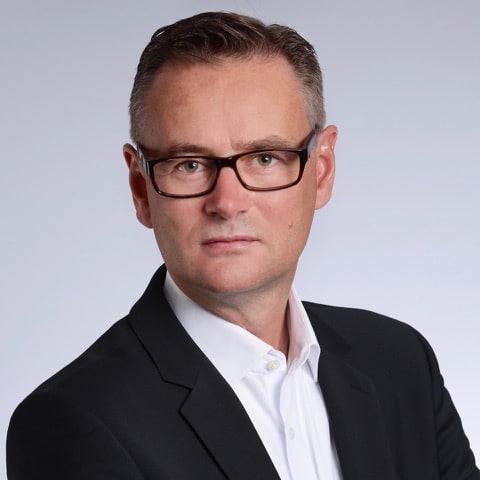
Part 1 in a Series on Rare Diseases
In the European Union, a disease is defined as rare when it affects fewer than five in 10,000 people. In the United States, the definition is similar: fewer than seven in 10,000 people.1 For the people affected by rare diseases—and the physicians who treat them—the official definition of “rare” is merely academic. Of course, they’re far more concerned with diagnosis and treatment, often in situations where support and resources are limited.
For decision makers in biopharmaceutical companies that are focused on rare diseases, that rarity presents a distinct set of challenges that they must address. Throughout this article series, we’ll outline those challenges and describe some frameworks for overcoming them. In this opening article, we’ll provide some basic background information and set the stage for future installments.
Background on Rare Diseases
Before going further, it would help to understand a bit about rare diseases in general. While rare diseases (RDs) are individually rare, there is a huge number of them. More than 7,000 diseases are classified as rare. The vast majority of them—about 80%—are genetic, can be life-threatening, and chronically affect people’s lives from early to late life.
Importantly, rare diseases typically do not result from any lifestyle choices made by the patient or from any controllable environmental factors.2 This is in contrast to some of the most common human diseases such as many cardiovascular, metabolic, or oncologic disorders.
Even though there are 7,000 rare diseases, about 80% of all RD patients are affected by a much shorter list of only 350.3 Due to the mostly genetic nature of RDs, 75% of all RDs affect children and can be life-threatening 4. About a third of affected children will not live to their fifth birthday.5 In fact, RDs cause 35% of deaths in the first year of life.6
Incentivized by government and regulatory actions, biopharmaceutical companies are increasingly attracted by RDs, and realize the very large unmet needs associated with them. Currently, more than 500 RD drugs are in development.7
In 2017, the worldwide market for RD (or orphan) drug sales was $124 billion (US). By 2022, that figure is expected to climb to $209 billion8. Clearly, the needs and opportunities are great, but RDs are different, and those differences bring challenges for pharmaceutical and biotech companies.
Why Rare Diseases Are Different
Each rare disease brings its own individual challenges. However, they all share some attributes in common that companies must consider when developing and marketing products in the space.
Low Patient Numbers
As one might imagine, rare diseases mean rare patients, and those patients are typically geographically dispersed. That makes them hard for pharmaceutical companies to recognize and to find. If a company operating in the RD space does not employ effective approaches to patient finding, the implications can be quite serious.
For products in development, it can dramatically slow patient recruitment, extend development timelines, and delay product launch. From a commercial standpoint, the unknown epidemiology in combination with ineffective patient finding can make it difficult for decision-makers to accurately estimate the size of the market. It will also slow market uptake and prevent a product from reaching its full market potential.
In conversations with RD industry leaders, we asked what their top challenges were. Unsurprisingly, finding patients was number one on their list.
Long Journey to Diagnosis
Among physicians—both general practitioners (GPs) and even specialists—knowledge and awareness of rare diseases is usually quite limited. This has significant implications for patients and for pharmaceutical companies.
Often, patients must endure long periods of uncertainty before their conditions are diagnosed. Due to limited awareness among physicians, patients are typically misdiagnosed two to three times before they’re diagnosed correctly. On average, proper diagnosis from the time of first symptoms takes about 5 years.9
Both misdiagnosis and the lack of a diagnosis contribute to patient suffering and a decreased quality of life.10 Such delays result in increased disease morbidity and mortality rates. Hence, RDs are typically associated with significantly larger burdens on the patients.
Speeding the time to diagnosis is critical to improving patients’ quality of life and outcomes, as well as maximizing an RD product’s value. Any company with a rare disease product must deeply understand the typical “patient journey” and the patient’s interactions with GPs and specialists along the way. Such an understanding will, among other things, help companies identify strategies for overcoming the awareness problem.
Few Disease Experts
True experts in any given RD are few and far between. As a result, the research focus is usually limited, diagnostic criteria are often unclear or non-existent, and treatment options are very limited.
The few experts that do exist in any given disease are highly important, and pharmaceutical companies must proactively identify and engage with them. They can help serve as a springboard for capturing and sharing information more broadly. This will help overcome the awareness problem mentioned above, resulting in speedier diagnoses, and improving the commercial prospects for the product in question.
High-Value Patients
Due to their rarity, RD patients are quite valuable to a pharmaceutical company. And while the development timeline for RD products can be accelerated, the company must usually recoup its costs—and generate a good return on investment—across a relatively small number of patients.
Consequently, the typical RD treatment costs range between $300,000 and $750,000 (US) per year.11 Add in that the typical patient needs life-long treatment, and the “net present value” of a single patient can easily exceed $10 million over a 25-year period.
Even though treatment options in most RDs are very limited, it’s incumbent upon pharmaceutical or biotech companies to make—and support—compelling clinical and economic arguments supporting coverage of any RD product. While the process for doing this is similar for all types of pharmacological therapies (rare or otherwise), it’s often more difficult with RDs because of the typically small evidence base and the high costs involved. In our discussions, RD industry leaders placed market access and value demonstration as their second toughest challenge, just behind finding patients.
The Complex Rare Disease Business Model
The successful RD business model is relatively complex and comprises three key elements. Below, we briefly explore each.
True Patient-Centricity
As stated earlier, the RD patient typically bears a high burden, as does the patient’s family in many cases. Both patient and family become very involved in treatment decisions and exercise a significant amount of decision-making power. The most successful RD companies recognize this and understand that they must place the patient at the center of their business focus. They routinely also evaluate key decisions through the patient’s perspective.
Patient-centricity in RDs also means providing a range of support services that go “beyond the pill” and that are designed to holistically ease the patient burden. Such services can include insurance access and coverage assistance, specialty pharmacy access and support, expanded access to experts, patient education, services designed to ease caregiver burden, and more. This approach can improve outcomes, build long-term relationships with patients, and generate a competitive advantage.
High-Touch Customer Model
We’ve established that rare disease patients are high-value from an economic standpoint. So are the prescribers who treat them, the payers who provide coverage, and other key players in the prescribing and delivery of RD medications.
Those key customers justify a “high-touch” model that delivers premium support and services to them via executive key account management. This model shows a long-term commitment to key customers. It also helps build loyalty and strengthens customer relationships.
RD Organizational Structure
To properly implement a patient-centric approach and the high-touch customer model, a biopharmaceutical company must have the proper organizational structure. The organization must be fully focused on providing patient & customer services. It must be highly competent, sized correctly, and seamlessly integrated through effective communication.
The problem is, most pharmaceutical companies are not organized to support this complex business model. In interviews, decision makers told us that developing the optimum organizational model for RDs is a “top three” challenge.
What to Expect in Future Articles
As this article series moves forward, we’ll address each of the key challenges mentioned above, as well as other topics related to commercializing rare disease products, including:
- Finding patients
- Demonstrating value
- Organizing to support the RD business model
- Establishing RD “Centers of Excellence”
- Launching RD products
For each, we’ll describe the challenges involved and provide frameworks that biopharmaceutical companies can use to deal with them. When possible, case studies will illustrate how successful RD companies overcame obstacles and moved forward. Our hope is that decision makers focused on RD products will gain some insights they can use to help patients get the therapies they need.
Notes:
- Orphan Drug Report 2017, 4th edition, EvaluatePharma, February 2017, p. 3. Available at http://info.evaluategroup.com/rs/607-YGS-364/images/EPOD17.pdf
- Statistics available from the following sources:
- Global Genes. Rare Diseases: Facts and Statistics, 2014. Available at http://globalgenes.org/rare-diseases-facts-statistics/
- Engel PA, et al. Physician and Patient Perceptions Regarding Physician Training in Rare Diseases: The Need for Stronger Educational Initiatives for Physicians. Journal of Rare Disorders, 2013, Vol. 1, Issue 2. Available at http://www.journalofraredisorders.com/pub/IssuePDFs/Engel.pdf
- Bavisetty S, et al. Emergence of Pediatric Rare Diseases. Rare Diseases, 2013, Vol. 1. Available at http://www.tandfonline.com/doi/full/10.4161/rdis.23579
- Global Genes. Rare Diseases: Facts and Statistics, 2014.
- Rare Diseases UK. Key Statistics from the RDUK Report “Experiences of Rare Diseases: An Insight from Patients and Families.” Available at https://www.raredisease.org.uk/media/1594/rduk-family-report.pdf
- Houlton, Sarah, “Orphan Medicines: The High Cost of Hope,” Prescriber, Jan. 2018, p. 23. Available at https://onlinelibrary.wiley.com/doi/pdf/10.1002/psb.1640
- Global Genes. Rare Diseases: Facts and Statistics, 2014.
- PhRMA. Medicines in Development for Rare Diseases, 2016, p.2. Available at: http://phrma-docs.phrma.org/sites/default/files/pdf/medicines-in-development-report-rare-diseases.pdf
- Orphan Drug Report 2017, 4th edition, EvaluatePharma, February 2017, p. 8.
- Engel PA, et al, p.1.
- EURORDIS. The Voice of 12,000 Patients. Experiences and Expectations of Rare Disease Patients on Diagnosis and Care in Europe. Available at: http://www.eurordis.org/IMG/pdf/voice_12000_patients/EURORDISCARE_FULLBOOKr.pdf
- Rare Disease Report. Orphan Drugs and Drug Pricing in 2017. Available at http://www.raredr.com/news/orphan-pricing-2017






